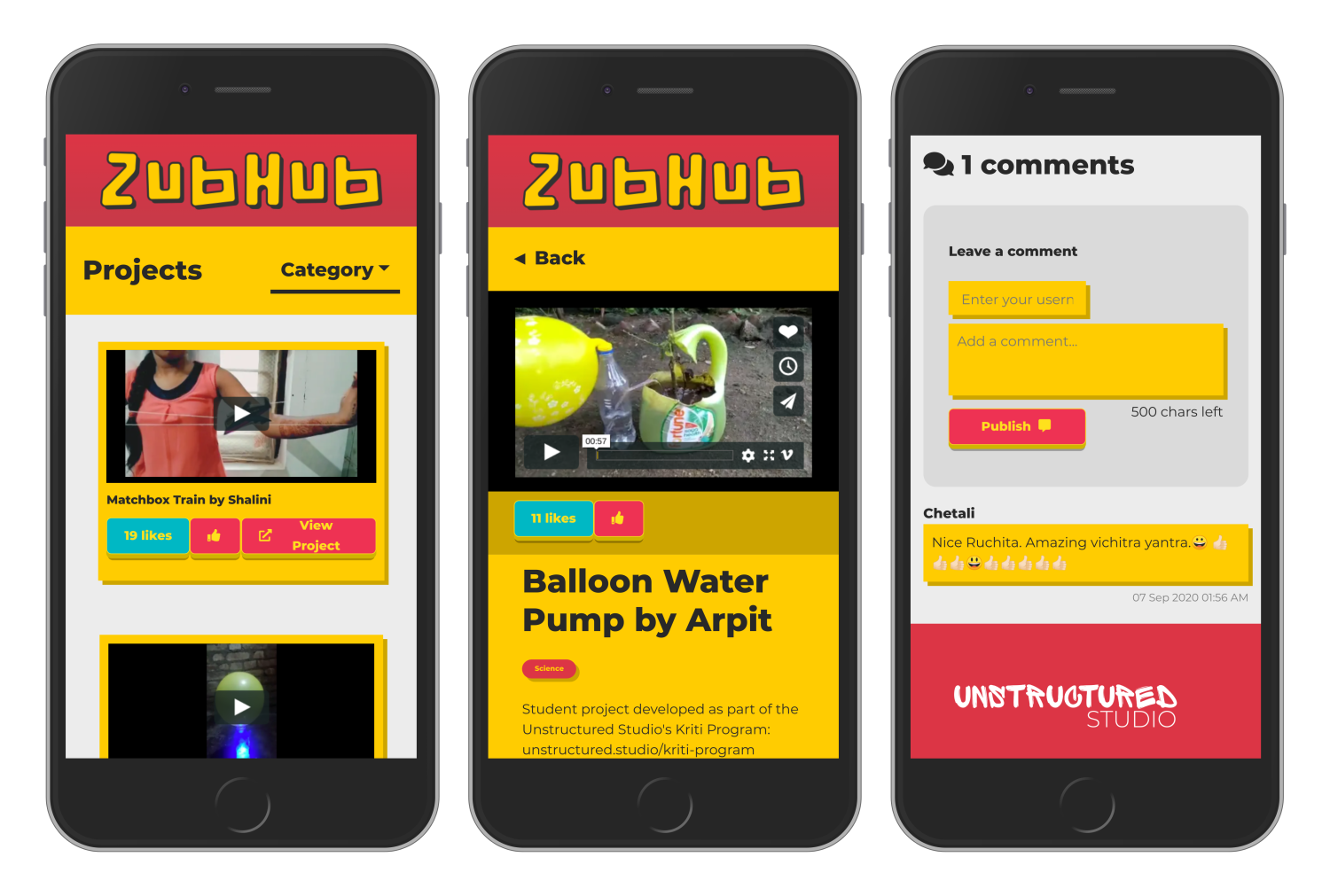In the summer of 2020, we launched a new pilot, Kriti Program, to engage students from under-resourced environments remotely in low-cost maker activities. In a two month pilot, 77 students from 3 organizations (2 schools and 1 NGO) based in Gujarat, India, participated in eight low-cost maker activities, conducted at an interval of 1 per week.
During two months, fifty students developed 74 projects for eight maker activities and 1024 messages were exchanged between students and teachers in 3 different languages: Hindi, Gujarati, and English.
Key elements of Kriti
In the program, we based most of our activities on the work of Tinkering Studio, inspiring educators like Rube Goldberg and Arvind Gupta. We used the following formats and mediums to engage students: guides in a PDF format consisting of step-by-step instructions, demo videos in a local language to show a project in action, audio, and text messages for facilitation, and WhatsApp groups for overall communication. We curated the existing guides, reduced the content, made the language easy for children to understand, made the instructions more linear, and provided alternatives for procuring materials quickly.
Thanks for the shout 📣❤️and for the amazing work you're doing with schools in India 🇮🇳 https://t.co/BjmySQXE1X
— The Tinkering Studio (@TinkeringStudio) July 25, 2020
Students thoroughly enjoyed working on these activities, especially in the lockdown times, when they didn't probably have many options to find joy. One of the students said:
I didn't have to go out to get materials, I got everything at home. It was simple to do, I didn't have to get anyone's help. I learned a lot. I learned that in this difficult time also, we can do something interesting.
Here is a selection of some fun-filled and creative projects made by students participating in our Kriti Program: https://t.co/I22jd94poP. Quite a few variations in materials and shapes, and some have even given names to their builds! #TinkeringAtHome #CreativeLearning pic.twitter.com/l7WNIRUa7s
— Unstructured Studio (@Unstructured_S) July 28, 2020
Kids engaged in our Kriti Program continue to build amazing projects from materials they gather in their houses! Truly, some #frugal #making and #tinkering pic.twitter.com/cgVqHWKjLu
— Unstructured Studio (@Unstructured_S) August 8, 2020
Creativity can flourish anywhere–kids always find ways to build cool things with materials available to them. Last week, students worked on balloon water pumps, contraptions & chain reactions; some made creative use of empty matchboxes they borrowed from neighborhood stores! pic.twitter.com/ogDqb5yryv
— Unstructured Studio (@Unstructured_S) August 21, 2020
During this program, we also strived to enable students to document their projects and share them with their peers. We encouraged them to do so by making a video of their project and including responses to a few questions, even using an app, Zub, that we specially prototyped to help students structure their documentation process around making. We supported students in their making journey through continuous facilitation using an inquiry-based approach that wouldn't give exact answers to students' questions, only provide hints, help them find their answers through self-exploration, and communicate with them via audio, video, and text messages. The facilitation style helped students connect the activities with the topics they learned in their science class and have related conversations.
To bring students to a central place where they can share their projects and form meaningful connections with one another, we developed a project showcase platform, ZubHub, where they could view projects shared in the WhatsApp groups, like and comment on them. We exhibited ~26 projects on this platform for the pilot that received ~277 likes and 8 comments, out of which 2 were from students.

Detailed Report
Throughout the pilot, we experimented with multiple formats of engagements that we had planned and developed to engage students, support their making, and celebrate their work. To understand how children engaged in the maker activities, their making and documentation process, their motivations and needs, and to make enhancements to the program iteratively, we interviewed ten children who participated in the pilot. We talked with teachers informally to get their impression and also kept a manual track of the statistics and conversations in the chat to understand the overall impact.
We have received appreciation from existing school partners for our work during this pilot and interest from a few other schools and teachers to replicate this program, so we are onto our next steps! We have produced a comprehensive report which contains details on our methodology, source of inspiration, lessons learned, and ideas for the next steps. Read our report and give your feedback 🙏
